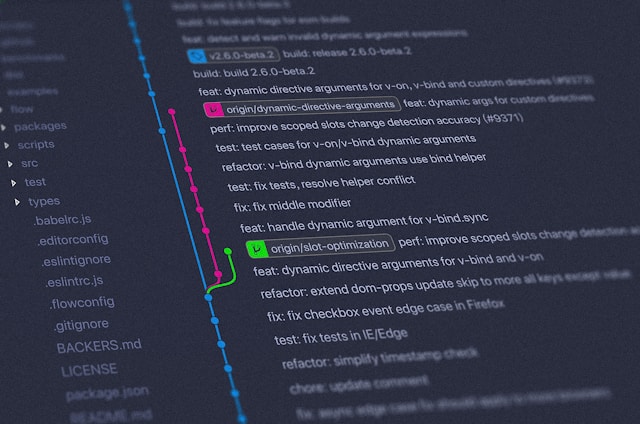I’ll never forget the day we launched our “revolutionary” SaaS platform back in 2019. The backend was bulletproof, our algorithms were sophisticated, and we had months of testing under our belt. Within 48 hours, our support inbox was flooded with complaints. Users couldn’t figure out basic navigation. The mobile experience was a disaster. Our conversion rate? A whopping 0.8%.
The problem wasn’t our product – it was our frontend. And honestly, that expensive lesson taught me more about front-end development services in Coimbatore and beyond than any textbook ever could.
Fast forward to 2025, and I’ve seen this story play out dozens of times. Brilliant ideas crushed by poor frontend execution. Mediocre products elevated by exceptional user interfaces. The difference? Knowing what actually makes a frontend developer great (hint: it’s not what most people think).
Why Most Companies Get Frontend Hiring Wrong
Here’s something nobody talks about: most businesses hire frontend developers like they’re hiring graphic designers who happen to code. Big mistake. The best front-end developers India I’ve worked with think more like product strategists than pixel pushers.
Last month, I was consulting for a startup in Austin. Their previous developer had built something that looked gorgeous in design comps but fell apart the moment real users touched it. Buttons that were too small for mobile. Forms that didn’t validate properly. Loading states that made users think the app had crashed.
The replacement developer we found? First question out of their mouth wasn’t about frameworks or design systems. It was: “Who’s using this product and what are they trying to accomplish?” That’s the mindset that separates amateurs from professionals.
The Technical Stuff That Actually Matters (Spoiler: It’s Not What You Think)
JavaScript: Beyond the Buzzwords
Everyone obsesses over the latest JavaScript frameworks, but here’s what I’ve learned after reviewing hundreds of portfolios: the developers who truly understand vanilla JavaScript are the ones who build systems that don’t break when the next shiny framework comes along.
I remember interviewing a candidate who couldn’t stop talking about their React expertise. When we gave them a simple DOM manipulation task – no frameworks allowed – they were completely lost. Meanwhile, another candidate demonstrated clean, readable JavaScript that solved the problem elegantly. Guess who we hired?
The UI development company leaders I respect most aren’t chasing every new trend. They’re building on solid fundamentals while staying aware of what’s actually useful.
The Framework Trap (And How to Avoid It)
Don’t get me wrong – frameworks matter. React powers some incredible applications. Vue makes complex state management feel intuitive. Angular… well, Angular has its place too (somewhere).
But here’s my unpopular opinion: developers who can only work in one framework are specialists pretending to be generalists. The best frontend developers in India I’ve collaborated with can pick up new frameworks quickly because they understand the underlying patterns.
A few months ago, we needed to hire frontend developers India for a project that required migrating from Angular to React. The developer who impressed us most wasn’t the React expert – it was the person who explained exactly why the migration made sense and how they’d preserve the existing user experience during the transition.
Responsive Design: It’s Complicated
Everyone talks about how to build responsive UI, but most explanations are oversimplified nonsense. “Just use media queries!” they say. Right. Tell that to the e-commerce site that needs to work perfectly on everything from a iPhone SE to a 34-inch ultrawide monitor.
Real responsive design requires understanding user behavior patterns. A data dashboard user on mobile isn’t trying to analyze spreadsheets – they’re checking key metrics during their commute. A shopping app user on desktop might want detailed product comparisons that would overwhelm a mobile screen.
The developers who get this don’t just make layouts flexible – they make experiences contextual.
The Soft Skills Nobody Talks About (But Everyone Needs)
Design Intuition: The Secret Weapon
I used to think designers and developers were separate species. Then I met Sarah, a frontend developer in Chennai who could spot usability issues from across the room. She’d catch things like insufficient color contrast, confusing navigation hierarchies, and form fields that would frustrate users.
Sarah didn’t have a design degree. She just cared enough to learn what makes interfaces work. When you find developers like that – hold onto them. They’re worth their weight in clean, maintainable code.
Communication: The Underrated Superpower
Technical brilliance means nothing if you can’t explain why your solution matters. The best frontend company USA teams I’ve worked with have developers who can talk to anyone – designers, product managers, even C-suite executives – in their language.
I once watched a developer explain a performance optimization to our CEO using a car analogy. Instead of talking about bundle sizes and lazy loading, he described it as “removing extra weight from a race car so it accelerates faster.” The CEO approved a week-long optimization sprint on the spot.
That’s the power of translation. Technical accuracy matters, but business impact sells the work.
Performance: Where Good Developers Become Great Ones
Speed Isn’t Everything (But It’s Almost Everything)
Google’s Core Web Vitals have made performance impossible to ignore, but there’s a nuance most people miss. Users don’t just want fast – they want predictable.
A frontend for SaaS platforms that loads in 2 seconds consistently will feel faster than one that sometimes loads in 1 second but occasionally takes 5. Consistency builds trust. Variability creates anxiety.
The smartest performance optimization I’ve seen came from a developer who realized our users kept clicking the same button multiple times because there was no immediate feedback. Instead of optimizing server response time, he added a simple loading state. User satisfaction scores jumped 23%.
Real-World Testing (Or: Why Your MacBook Pro Lies to You)
I learned this lesson the hard way. Our product felt lightning-fast on our development machines – MacBook Pros with high-speed internet and unlimited data. Then we tested it on a mid-range Android phone using a 3G connection. Disaster.
Now, every developer I work with has a budget phone for testing. It’s humbling and essential. Your users aren’t all running the latest hardware on fiber connections.
Security and Accessibility: The Multipliers
Security: It’s Everyone’s Job Now
Frontend security used to be simpler. Sanitize inputs, avoid XSS, call it a day. But modern applications blur the lines between frontend and backend responsibilities. API keys in client-side code, improper authentication handling, insecure direct object references – I’ve seen it all go wrong.
The developers I trust most are paranoid in the best possible way. They assume every input is malicious, every API response could be compromised, and every user might be trying to break things. It sounds exhausting, but it produces rock-solid applications.
Accessibility: The Business Case
I used to think accessibility was just about legal compliance. Then I watched a user with limited mobility navigate our interface using voice commands. She could complete tasks faster than some users with traditional input methods – when the interface supported it.
That experience changed how I think about accessibility. It’s not accommodation – it’s optimization. Accessible interfaces work better for everyone. Screen reader compatibility forces clear information hierarchy. Keyboard navigation reveals workflow inefficiencies. High contrast design improves usability in bright sunlight.
The Business Impact Mindset (This Changes Everything)
Metrics That Matter
Great frontend developers think like product managers. They care about conversion rates, user engagement, and customer satisfaction – not just technical elegance.
I remember a heated debate about implementing a fancy animation sequence. The designer loved it. The developer thought it was wasteful. Instead of arguing, our frontend lead suggested A/B testing it. The animation looked great but increased bounce rate by 12%. We killed it.
That’s the mindset that transforms developers into business assets. They don’t just build what they’re told – they question whether it’s the right thing to build.
Understanding User Psychology
The best front-end development services in Coimbatore or anywhere understand that users don’t behave rationally. They scan instead of read. They click without thinking. They abandon processes for tiny friction points.
Building for actual human behavior requires empathy, not just technical skills. The developers who get this create interfaces that feel intuitive even when they’re technically complex.
How to Actually Find These Unicorns
Look Beyond the Resume
The most impressive developer I’ve ever hired had a portfolio filled with small, personal projects instead of flashy corporate work. Each project solved a real problem – a tool to help his grandmother track medications, a simple budget tracker for college students, a local business directory.
These projects revealed more about his thinking than any corporate case study could. They showed problem-solving skills, user empathy, and the drive to build useful things.
The Right Questions to Ask
When interviewing, I skip the algorithmic puzzle questions. Instead, I ask about their biggest frontend failures and what they learned. Great developers have war stories. They’ve shipped code that broke, received user feedback that stung, and iterated until things worked.
I also ask them to critique existing interfaces – our competitors, popular apps, even our own product. Their observations reveal how they think about user experience and what they value in design.
Red Flags to Avoid
Be wary of developers who can’t explain their choices in simple terms. If they can’t justify why they chose React over Vue or explain why their CSS is structured a certain way, they might be following trends instead of making thoughtful decisions.
Also watch out for perfectionism paralysis. Great developers ship imperfect code that works, then iterate. Developers who can’t ship anything without extensive polishing will slow down your entire team.
The Investment Perspective
Why Cheap Frontend Work Costs More
I’ve seen companies try to save money by hiring the lowest bidder for frontend work. It never works. Poor frontend decisions compound over time. Bad architecture becomes harder to maintain. Accessibility problems turn into legal risks. Performance issues drive away users.
When you hire frontend developers India or anywhere else, you’re not just buying coding time – you’re investing in your product’s future. Great developers write code that lasts, scales, and adapts to changing requirements.
Building vs. Buying Talent
Sometimes the best frontend developer for your team isn’t the one with the most experience – it’s the one with the best growth mindset. I’ve hired junior developers who became senior contributors within months because they were curious, coachable, and obsessed with improving user experiences.
Senior developers bring expertise, but motivated juniors bring fresh perspectives. The best teams have both.
What 2025 Actually Changes
The fundamentals haven’t changed much, but the stakes keep getting higher. Users expect more. Competition is fiercer. The margin for error keeps shrinking.
The developers succeeding in this environment aren’t necessarily the most technically sophisticated – they’re the ones who balance technical excellence with business understanding. They build things that work reliably, perform well, and solve real problems.
That’s what I look for now when hiring. Not the perfect candidate, but the right one. Someone who cares about craft but also about impact. Someone who can write beautiful code but never forgets it needs to serve real users with real needs.
Find those people. Invest in them. And watch your digital products transform from functional to phenomenal.
Because in 2025, that’s not just nice to have – it’s how you win.



